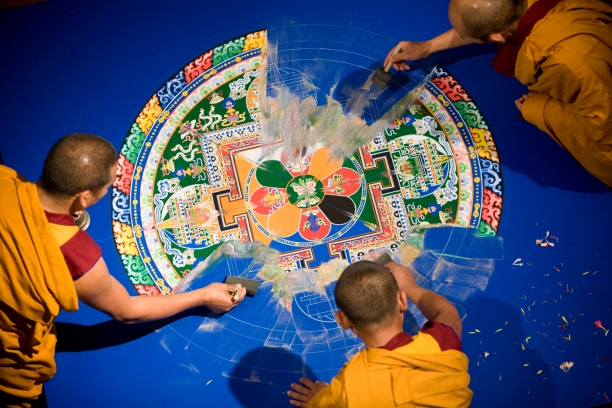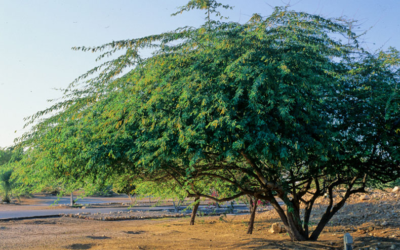There is nothing permanent except change.
Ladakh is one of the few places humans have made habitable by their presence. In a land of chilling winds, scorching sun and blinding snow, an oasis of tall trees and sparkling streams is a testimony to this monumental endeavour.
There wasn’t much in Ladakh to begin with. Whole rivers remained frozen for half the year, the mountains were so loose that one could dismantle it with bare hands and air so thin that water boiled away before the rice was cooked. So it wasn’t a surprise when buddhists found Ladakh alluring to pursue their quest of non-attachment and established the first settlements along the Indus.
Soon all of Ladakh was dotted with vast buddhist monasteries. These monasteries later became the locus of community action. The monks mobilised the villagers to create canals channeling the water from the nearby glacial streams and motivated villagers to work on the irrigated land. They provided sanctuary to the needy and ensured everyone was well fed. Soon, the surrounding desert had transformed into a thriving ecosystem of trees, insects and animals. In reverence to the monastery’s contribution to the village’s development, every child born in the village is named by the high priest (Lama) of a monastery. The synergy among the people is evident as they sing songs while harvesting each other’s fields and building each others houses.
One must understand the tenets of Buddhist religion namely compassion and detachment to find out how all this was possible. In contemporary usage, compassion brings to mind outward-moving concern for others, while detachment suggests aloofness and withdrawal from the world. Yet Buddhism recommends both as admirable and necessary qualities to be cultivated. Detachment in the Buddhist texts written in Pali denotes indifference or non-attachment to material goods or sense pleasures. The Buddhist texts refer to four strands of grasping: grasping of sense pleasures, of views, of rule and custom, of doctrines of self.
All of these can also be described as forms of desire. To destroy their power over the human psyche, attachment to them must be transformed into non-attachment. Non-attachment or non-grasping would therefore flow from the awareness that no possession, no relationship, no achievement is permanent or able to give lasting satisfaction; from the discovery that there is no self which needs to be protected, promoted, or defended; and from the realization that searching for selfish sensual gratification is pointless, since it leads only to craving and obsession.
One such monastery overlooks the village of Phyang where I reside. I work with a Lama who has been in the service of the monastery for the past 45 years (he had reconstructed the whole monastery a few years back). He used to sit on the middle of the road facing the hot sun with his robe flapping in the dusty winds to preside over the construction of the entrance arch being constructed for Phyang village. I never expected a celibate monk whom I had seen only in monasteries until then to meditate over the intricacies of construction work sitting in the middle of the road.
That is when I realised how effective a person like the Lama who had renounced worldly possessions could be in getting others work for each others welfare. But I also wondered what his motivation was behind motivating others. It later struck me when I related his work to the buddhist practice of creating mandalas. The mandala is a spiritual symbol that represents the universe. Literally translating to ‘center and its surroundings’, mandalas always contain a center point and a circle, surrounded by some sort of symmetrical design. They’re created from sand, on paper or cloth, or built as three-dimensional models, always meticulously visualized and assembled to yield a deeper meaning.
The creation of a mandala, the representation of the world in divine form, perfectly balanced, precisely designed, is meant to reconsecrate the earth and heal its inhabitants. But it is more than a picture. Sand painting is an intricate process. It requires millions of pieces of sand to make a mandala five by five feet square.
It requires a team of monks working anywhere from days to weeks, depending on the size of the mandala, to create this floor plan of the sacred mansion that is life. It requires the interplay of vivid colors and ancient symbols. The monks bend over the piece for hours on end, dropping one grain of sand after another into intricate symbolic patterns. The purpose is to call the community to meditation and awareness of something larger than their own small world.
But the process itself, as laborious, as precise, as artistic, as stunningly powerful as it is, is not really the message. When the mandala is finally finished, however long it takes for the monks to deal in this divine geometry of the heavens, they pray over it — and then they destroy it. They sweep it up, every last grain of sand and give handfuls of it away to those who participate in the closing ceremony as a final memory of sublime possibility. Then they throw the rest of the sand into the nearest living stream to be swept into the ocean to bless the whole world. And that’s it. It’s gone. In an instant, after all that artistry, all that work, it’s over.

I could see now that for the Lama the whole village was a mandala with the monastery at the centre. Even though he was indifferent to the results of the tasks he was engaged in, he found involving in them satisfactory as the work that he did formed lasting bonds between people by uniting them with this common sense of purpose and thus making them more compassionate toward each other.




While i was reading i was wondering where the post is leading to. Good to always read your blog since it gives me so much information of a place i visited but i guess never paused for long to understand. Ladakh is so much more meaningful after your blog series 🙂
While i was reading i was wondering where the post is leading to. Good to always read your blog since it gives me so much information of a place i visited but i guess never paused for long to understand. Ladakh is so much more meaningful after your blog series 🙂
Such an informative and well researched blog..I really enjoy reading your blogs…everything is so perfect from writing to content..looking forward to read more 🙂
Such an informative and well researched blog..I really enjoy reading your blogs…everything is so perfect from writing to content..looking forward to read more 🙂